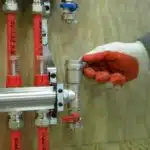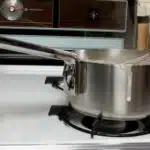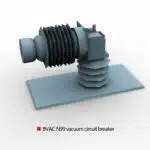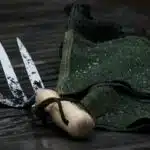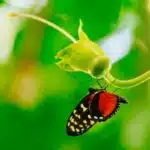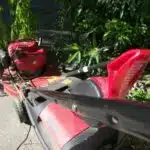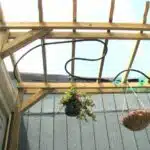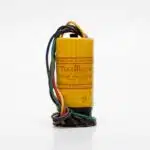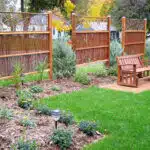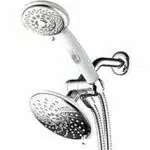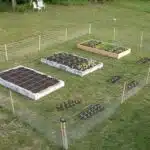Are you looking for an efficient and economical way to water your garden? A drip irrigation system is one of the best options to maintain a healthy garden with minimal effort. With a few simple parts and tools, you can quickly install a drip irrigation system in your garden that will save time and money while keeping your plants hydrated. In this article, we’ll provide step-by-step instructions on how to install a drip irrigation system in your garden.
Gardening can be hard work and time consuming. Watering the garden by hand can take up a lot of time, and if done incorrectly, it can lead to unhealthy or dead plants. But with the right tools, gardening doesn’t have to be so difficult. Installing a drip irrigation system in your garden is an easy way to make sure your plants get enough water without having to constantly monitor them.
A drip irrigation system is inexpensive, easy to install, and low maintenance once it’s set up. It delivers water directly to the roots of plants where it’s needed most, saving time and energy while promoting healthy plant growth. Ready to get started? Read on for step-by-step instructions on how to install a drip irrigation system in your garden!
Gather Supplies And Tools
Creating a garden oasis begins with gathering the supplies and tools needed to install a drip irrigation system. Just as each plant has its own unique needs, so does each garden. To ensure success, it’s important to acquire the right materials for the job.
The basic materials for a drip irrigation system include soaker hoses, stakes, connectors, tubing, and various other components depending on your specific project. Furthermore, it’s recommended to have some smaller tools like scissors or pliers handy as well.
Having the proper supplies and tools to get started is essential before moving on to the next step in installing a drip irrigation system – deciding on an appropriate layout. With the right preparation and research upfront, you can provide your plants with adequate hydration without stressing over their upkeep.
Choose An Appropriate Layout For Your Drip System
Once you have your supplies, the next step is to choose an appropriate layout for your drip system. This will involve mapping out where the water will be distributed and what kind of emitters need to be used. When designing a drip irrigation system, it’s important to think about how much water needs to get to each area and how that can be achieved in the most efficient way. For example, if you want a large garden bed watered evenly, using multiple long lines of drip line connected together is the best solution.
If you have plants in different areas of your garden that need different amounts of water, or there are slopes or other landscape features that require more complicated layouts, you may need to use multiple zones with separate lines for each one. Additionally, it’s important to consider any obstacles such as trees or pathways that may impact the design of your system. Once you have determined where each zone should go and which emitters are needed for each one, you can begin laying out the pipes and connecting them together.
Once all of this is set up correctly, it’s time to connect the main water line to the timer so that it can run automatically according to your desired schedule. This is an important step because it ensures that everything will work as planned and ensure optimal watering times throughout the season. It also helps conserve water by avoiding unnecessary runoff or overwatering due to incorrect settings.
Connect The Main Water Line To The Timer
Connecting the main water line to the timer is like piecing together a jigsaw puzzle. Each connection must be made with precision and attention to detail for the irrigation system to function properly. It requires a bit of elbow grease, but it will pay off in the end.
Start by gathering all necessary supplies – the timer, connector fittings, hose clamps, and tubing. Make sure these items are compatible with your garden’s water supply line. Once everything is in place, you can begin connecting the main line to the timer unit. First, attach one end of the tubing to the output side of the timer using a connector fitting. Make sure it is secure and tightly fitted so that no water leaks out through this connection. Next, attach a hose clamp to secure it in place.
Finally, connect the other end of tubing to your main water supply line using another connector fitting and hose clamp. This connection should also be checked for tightness and security after installation. Now that you have connected your main water line to your timer unit, you are ready for install pressure regulator – another key step towards creating a successful drip irrigation system for your garden!
Install The Pressure Regulator
Once the timer has been connected to the main water line, it’s time to install the pressure regulator. This device is vital for ensuring that too much water isn’t coming into the system, which would put unnecessary stress on the pipes and components. To install it, you’ll need to attach one end of a hose to the regulator and the other end to a faucet or spigot. Make sure that both ends are secured tightly and that there are no leaks or drips.
Test the regulator by turning on your spigot or faucet until you see some pressure in the line and then turn it off. If everything is working correctly, you should be able to adjust the flow rate using a knob or dial on the regulator. Otherwise, check all of your connections again and make sure they’re tight before trying again.
Once you’ve got everything functioning properly, your drip irrigation system is ready to go! By taking these steps now, you’ll be saving yourself a lot of time and effort later when it comes time to water your plants. With this setup in place, you can sit back and enjoy watching your garden grow with minimal effort from yourself!
Attach The Tubing To The Water Line
Once the pressure regulator has been installed, the next step is to attach the tubing to the water line. This can be done by connecting the irrigation tubing with a special fitting that connects directly to the water line. It is important to ensure that the connection is secure and leak-free before continuing on to the next section.
The tubing should then be laid out around your garden in whatever pattern you desire, following any curves and turns along its path. Before laying it out, you should also consider whether or not it needs to be raised above ground level for better drainage or if it needs to be tucked away in a corner for aesthetic purposes.
For those who want a more comprehensive system, this is also when emitters should be connected along the irrigation tube. Emitters are small devices that regulate water flow from one point of distribution along an irrigation tube and will help ensure that each area of your garden receives an even amount of water. These can easily be attached using clamps or other attachments designed specifically for this purpose.
Attach The Tubing To The Emitters
According to the United States Department of Agriculture, over 80% of the water used by households is used to irrigate yards and gardens. Installing an effective drip irrigation system, such as a soaker hose, is key for saving both time and water. After connecting the tubing to the water line in the previous step, it’s now time to attach it to the emitters.
To start off, cut pieces of tubing that are long enough to reach each emitter. The emitter should be placed near each plant you want watered or near your garden bed. Then, attach one end of the tubing to the emitter and use a connector fitting at the other end to fasten it onto your main irrigation tubing. Make sure each end is firmly connected and won’t come apart easily. It’s also important to ensure that all emitters are pointed downwards so that they can accurately deliver water without leakage or wastage.
Once all emitters have been attached correctly, turn on your water source and check for any leaks or blockages in the system. If everything looks good then you’re ready for installation! Now that you have connected all parts of your soaker hose drip irrigation system together, it’s time to move on to installing them in your garden beds.
Install The Emitters
Erecting the emitters is the final step towards having a beautiful and bountiful garden with a functioning drip irrigation system. Like building a house of cards, each piece must be carefully placed in order for the system to operate effectively. With that said, installing the emitters is no daunting task.
Much like putting together a puzzle, attaching the emitters requires precision and patience. Start by determining where you want to place them, making sure they align with your existing hoses and sprinklers. Then, using your drill and an appropriate bit size for the size of emitter being installed, create holes in your tubing according to the instruction manual. The emitter should then be inserted into these holes and tightened until secure.
Once all emitters have been installed, it’s time to connect them to the water timer so you can start irrigating your garden!
Connect The Tubing To The Water Timer
Finally, you’re ready to take your garden’s irrigation system to the next level! After installing the emitters, it’s time for step 8: connecting the tubing to the water timer. This is a cinch and can be done in a jiffy, so let’s get started.
Firstly, find out where your water main is located. Once you’ve determined this, attach one end of the tubing to the timer. Then, attach the other end of the tubing to the water main. If you need to make any connections between two pieces of tube, use a T-connector or an elbow connection; this will help ensure that your system runs smoothly and efficiently.
Now that your tubing is connected to both your timer and water main, it’s time to run it through your garden. Just follow along with our ‘run the tubing through your garden’ section and you’ll be set!
Run The Tubing Through The Garden
The garden is like a canvas, waiting to be filled with the beauty of life. One way to fill it is with a drip irrigation system, the perfect way to give your plants the care they need. The final step in this process is to run the tubing through the garden.
The tubing snakes its way through the garden like a river of life, nourishing each flower or vegetable it passes by. This precious resource can mean the difference between a thriving garden and one that withers away. As you take time to place each length of tubing in just the right spot, you’re giving your plants what they need to bloom and grow.
This process of installation allows you to make sure that all of your plants get enough water without having any go to waste. And when properly secured, these tubes will stay in place for years without needing extra attention. It’s a small investment now that will result in big rewards later on. With this simple system, you’ll be able to keep your plants healthy and happy all season long – no matter how much rain falls. Now all that’s left is to secure the tubing firmly against the ground so it won’t shift or move over time.
Secure The Tubing To The Ground
Securing the tubing to the ground is a simple yet essential step in installing a drip irrigation system. Staking and supporting the tubing ensures that it stays in place while providing water to your garden. To secure the tubing effectively, several straightforward steps should be taken.
First and foremost, use stakes to hold down the tubing. Using garden staples or other U-shaped objects can help keep the tubing grounded and prevent it from being displaced by wind or animals. Additionally, using zip ties where needed can provide extra security for your drip irrigation system’s tubing.
Overall, taking these measures of staking and securing the tubing helps create a more functional and reliable irrigation system for your garden. With a strong foundation established, you can now move on to connecting your tubing to a timer so that watering is automated according to your desired schedule.
Connect The Tubing To The Timer
Connecting the tubing to the timer is the next step in setting up a drip irrigation system. It requires some preparation, as you will need to find the right spot for the timer and make sure it is connected properly. The process of connecting the timer can be done in a few simple steps.
First, measure out the distance between your water source and where you want your timer to be. Then, cut the tubing so that it fits between these two points. Next, attach one end of the tubing to your water source and secure it with a clamp or tie-wrap.
It’s important that you connect the other end of this tubing securely to your timer. Take care when doing so: use couplers if necessary and ensure that all connections are tight so that no water leaks out over time. Once attached, turn on the water source and check for leaks or loose connections before finalizing installation.
With that done, you are now ready to move on with setting up a drip irrigation system for your garden!
Connect The Tubing To The Water Source
With the final piece secured, you can almost feel the anticipation. You have come so far and are on the brink of a fully functioning drip irrigation system in your garden. The only thing missing is connecting the tubing to the water source.
Before you do that, make sure you have all of your supplies close by: an adjustable wrench or pliers, a timer, and a multimeter. Once everything is within reach, it’s time to start connecting.
Locate where the water will be coming from and attach one end of the tubing to it with your wrench or pliers. Take extra care to ensure it is secure before turning on any water as you don’t want any leaks! With one end securely connected, connect the other end of the tubing to your timer. Make sure both connections are tight and free of leaks before moving onto testing the system.
Test The System
Testing the system is an important step to ensure that it’s working properly. Before turning on the water source, you can check each connection with a few drops of water to see if any leaks occur. If there are no leaks, you can then turn on the water source and inspect the system for proper flow. Be sure to pay attention to where the water comes out of each emitter or hose so that it is evenly distributed throughout your garden.
Once everything is connected and running, take some time to observe how the system works and make any necessary adjustments. You may need to adjust the pressure regulator or add more emitters if certain areas aren’t getting enough water. It’s also a good idea to double-check all of your tubing connections for any potential leaks.
Now that you have successfully installed and tested your drip irrigation system, it’s time to start maintaining it. Regular maintenance will help ensure that your system continues working as intended for many years to come.
Maintain Your Drip System
Maintaining a drip system is as important as installing it. Regular upkeep guarantees that your garden remains healthy, just like you must regularly care for yourself to stay healthy. Taking the time to check and adjust the system will ensure that your plants receive the right amount of water, so they can flourish.
To maintain the system, inspect it every few weeks to ensure all parts are still in working order. Make sure there are no clogs in the tubing by running water through it and cleaning out any debris or dirt. Check all connections and replace any worn-out parts. Adjusting the timer also helps keep plants hydrated with enough water and prevents overwatering.
By taking these steps, you can keep your garden looking attractive and thriving for years to come!
Troubleshooting Tips
No matter how well you install your drip irrigation system, it can still malfunction and need troubleshooting. According to the National Gardening Association, approximately 75% of households in America have some form of garden. So, if your garden is one of them and you’ve installed a drip irrigation system, chances are you’ll eventually need to do some troubleshooting.
There are some simple fixes for minor issues that won’t require professional help. You’ll want to start by checking the water pressure and ensuring that all the components are properly connected. If those components are clogged with dirt or debris, they may need to be replaced or cleaned out if possible. As well as checking for any clogs, it’s important to make sure that all parts are securely connected and there aren’t any leaks in the system.
If your basic troubleshooting efforts don’t resolve the issue, then it may be best to contact a professional who specializes in installing and maintaining these systems. They can provide advice on what needs to be done or take over completely if necessary. With their expertise and tools at hand, they should be able to diagnose and repair any issues quickly and efficiently so you can get back to enjoying your garden again!
Frequently Asked Questions
What Type Of Water Source Can Be Used With A Drip Irrigation System?
Installing a drip irrigation system in your garden is an effective way to conserve water and help your plants stay healthy. But what type of water source can you use with this system? Generally speaking, you can use any kind of potable water source, such as a hose or faucet, but it’s important to make sure that the pressure is low enough so the water doesn’t come out too quickly.
If you have a well on your property, then that is a great option for a water source. However, you’ll need to make sure that your well has been tested to ensure that the water being pumped from it is safe for consumption and free from bacteria or other contaminants. If you are using city water, then be sure to check with your municipality about any restrictions on how much water can be used with the system.
In addition, if you live in an area where there are seasonal droughts or restrictions on outdoor watering, then it may be best to opt for alternative sources like rainwater harvesting or greywater systems. These options will help save money on bills while also ensuring that your garden stays healthy and lush all year round.
Are There Any Considerations When Selecting The Layout Of A Drip Irrigation System?
When selecting the layout of a drip irrigation system, there are some considerations that should be taken into account. Sure, it’s tempting to just get started with your DIY installation right away, but taking the time to plan ahead can save you money and result in a more effective water delivery system. Before you begin installing your drip irrigation system, let’s take a look at the considerations for selecting its layout.
One of the most important considerations is accounting for any slopes or changes in elevation in your garden space. If there are any dips or rises in your garden, this could affect how water is delivered through the system. In addition, it’s also important to consider which plants will need more or less water – this will require different amounts of pressure and flow rate depending on their needs.
Finally, when designing the layout of your drip irrigation system, it’s important to create a uniform pattern so that each plant gets equal access to water. This may involve using valves and other components to create a balanced design and ensure that all areas receive adequate coverage from the irrigation system. With careful planning and consideration for these factors, you can maximize the efficiency of your drip irrigation system and achieve healthier results for your garden!
What Type Of Maintenance Is Required For A Drip Irrigation System?
A drip irrigation system may seem like a daunting task to install, but with careful planning and attention to detail, it can be a breeze! Setting up a drip irrigation system is an excellent way to ensure that your garden stays hydrated and healthy. While it’s easy enough to set up, there are some considerations for maintenance that you need to keep in mind.
So what type of maintenance does a drip irrigation system require? The answer is plenty! From replacing worn out parts to removing clogs and cleaning filters regularly, there’s no shortage of upkeep needed. It may seem overwhelming at first – but don’t worry, with the right attitude and resources, it’ll be a cinch!
Having regular maintenance checks on your drip irrigation system is essential for keeping it running smoothly. Not only can regular cleaning help prevent clogs or malfunctions from happening, but it also helps ensure that water reaches each plant with the right pressure and amount. Of course, having the proper equipment on hand will also make things easier. Investing in quality tools and supplies will save you time and money in the long run – so don’t skimp when it comes to maintenance!
Are There Any Safety Precautions To Keep In Mind When Installing A Drip Irrigation System?
When installing a drip irrigation system in your garden, it is important to consider the safety precautions that come along with this type of irrigation. After all, you want to make sure you’re properly protecting yourself and your plants while completing the installation process.
The first step is to make sure you are wearing protective gloves and eyewear. This is especially important if you are working with any sharp tools or pieces of equipment such as drills or saws. You should also wear long sleeves and long pants to protect your skin from dirt and debris.
It’s also important to consider the potential hazard of electrical shock when working around water. If there are any electrical connections that need to be made, it’s best to contact a licensed electrician who can take proper safety precautions. Additionally, be sure to check for any buried power lines or pipes before starting the installation process so you don’t accidentally damage them.
Taking these safety precautions when installing a drip irrigation system will ensure that your installation process goes smoothly and without incident. Make sure that you have the right protective gear on hand before beginning so that you can protect yourself while getting your garden ready for its new irrigation system!
How Often Should The Water Timer Be Adjusted?
Watering your garden is like giving it a hug, and what better way to do that than with a drip irrigation system? A drip irrigation system is easy to install and can be adjusted to water your plants precisely how much they need. But once you have it installed, how often should you adjust the water timer?
The answer lies in the weather. During times of intense heat or heavy rainfall, you should adjust the timer so that your plants get enough water without wasting any. If it’s been unusually hot and dry for several days, then you might want to increase the time between watering sessions. On the other hand, if there has been a lot of rain recently, you may want to cut back on the amount of water being released. Additionally, if you notice some of your plants drying out faster than others, then adjusting the timer could help even things out for them.
So when it comes to watering your garden with a drip irrigation system, it pays to pay attention to the weather! Keep an eye on conditions outside and adjust the timer accordingly. It may seem like extra work at first but you’ll soon find yourself in sync with nature’s rhythm and caring for your garden will become second nature.
Conclusion
The installation of a drip irrigation system is an excellent way to promote healthy plant growth in your garden. Not only does it reduce water usage, but it also helps to ensure that plants are getting the water they need to flourish. With proper installation and maintenance, a drip irrigation system can be a valuable addition to any garden.
Installing a drip irrigation system may seem intimidating at first, but with the right preparation and understanding of how it works, anyone can do it. In fact, one homeowner in California was able to install their own system after researching online and consulting with local experts. After just two weeks of implementation their garden was thriving!
By following the steps outlined in this article you too can experience success with your own drip irrigation system. From selecting the appropriate water source and layout for your garden to understanding how often the timer should be adjusted, there’s no reason why you shouldn’t be able to enjoy beautiful plants all year round!


